This year is no different as the U.S. falls one spot to 23rd place, continuing a decade-long slide from its No. 1 ranking in 2006. Falling scores on trade and monetary freedom, along with rising levels of red tape and bureaucracy are behind the decline for the world’s largest economy. The Heritage Foundation cites more than 180 new federal regulations imposed on businesses since 2009 with annual costs of $80 billion following the bailouts of the auto and financial industries amid the Great Recession, along with increased government intervention in the housing and health insurance markets. Trump’s potential plans to impose tariffs on foreign imports is not a recipe for improving the U.S. ranking.

Stockholm, Sweden (photo: Getty Images/Flickr RF)
One country headed in the opposite direction is Sweden, which moves up four spots to the top of the charts for the first time (Sweden ranked No. 17 in 2006). Over the past two decades the country has undergone a transformation built on deregulation and budget self-restraint with cuts to Sweden’s welfare state.
Taxes are still high relative to the rest of the developed world, but taxes paid as a percent of profit are down eight percentage points over the past decade and the country’s tax burden rank in the World Bank’s Ease of Doing Business has improved 11 spots during the time.
Sweden is home to some of the most venerable, well-known brands in the world, including Volvo, Electrolux, Ericsson and H&M. Retail giant IKEA was founded in Sweden in 1943 by then 17-year-old Ingvar Kamprad. But Sweden has also become a haven for tech startups.
Skype was co-founded by Swede Niklas Zennstrom in 2003. Ebay acquired the video chat application for $2.6 billion in 2005 and Microsoft paid $8.5 billion six years later. Music streaming service Spotify was founded in Sweden a decade ago by Daniel Ek and Martin Lorentzon. The company has 40 million paid users (twice the number of Apple Music) and was in talks to acquire another Swedish music subscription service, SoundCloud, before walking away this month, according to TechCrunch. Spotify is focused on a potential initial offering in 2017 that would be one of the most anticipated IPOs of the year.
Sweden is the home to a pair of companies that created two of the biggest games of this decade. King Digital Entertainment started in 2003 and nine years later launched the addictive Candy Crush Saga mobile game, which was downloaded more than 500 million times. After a 2014 IPO, Activision Blizzard paid $5.9 billion to acquire King this year. Mojang was founded by Markus “Notch” Persson in 2009 and developed the hit block-building game Minecraft. Microsoft paid $2.5 billion for the company in 2014.
This is the 11th straight year Forbes has gauged the world’s economies to measure which are the most inviting for capital investment. We graded 139 countries on 11 factors: property rights, innovation, taxes, technology, corruption, freedom (personal, trade and monetary), red tape, investor protection and stock market performance. The data is based on published reports from Freedom House, Heritage Foundation, Property Rights Alliance, Transparency International, World Bank Group and World Economic Forum (click here for more details on the methodology and the best and worst country on each metric).
New Zealand takes second place in this edition of Forbes’ Best Countries for Business. New Zealand is the smallest economy of the top 10 countries with a GDP of $174 billion, but over the past three decades it has transformed its formerly highly regulated economy into a dynamic free market. New Zealand privatized dozens of government controlled industries like airlines, insurance, banking and telecommunications. It now ranks first for both investor protection and lack of red tape. The country’s GDP rose 3.6% in the second quarter of 2016, one of the top growth rates in the developed world.
Rounding out the top five are Hong Kong, Ireland and the United Kingdom. In the case of the U.K., most of the data was collected before the country decided to leave the European Union in June. The full impact of Brexit will take years to be realized.
Japan, the third-biggest economy in the world at $4.1 trillion, had one of the biggest drops in the rankings, down 13 spots to No. 36, due to declining scores for investor protection and monetary freedom. The Heritage Foundation highlighted the political resistance to scaling back farm subsidies. Japan’s stock market is up 30% since bottoming out in June following Britain’s vote to exit the European Union, but the Nikkei 225 just reached positive territory for the year and is still below its 2015 highs. Japan’s government debt as a percent of GDP is 230%.
Central African country Chad ranks last for the second straight year. The landlocked nation falls in the bottom five in four of our 11 metrics, including tax burden, technological readiness, trade freedom and red tape. The drop in energy prices has deeply hurt Chad, which relies on oil for more than half of its exports. Gambia, Haiti, Yemen and Venezuela make up the rest of the bottom five.
Source: Forbes
| Rank | Name | GDP Growth | GDP per Capita | Trade Balance/GDP | Population | |
|---|---|---|---|---|---|---|
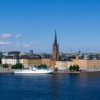 |
#1 | Sweden | 4.2% | $50,300 | 5.2% | 9.9 M |
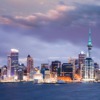 |
#2 | New Zealand | 3% | $37,800 | -3.2% | 4.5 M |
 |
#3 | Hong Kong | 2.4% | $42,400 | 3.1% | 7.2 M |
 |
#4 | Ireland | 26.3% | $51,300 | 12.2% | 5 M |
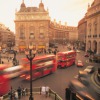 |
#5 | United Kingdom | 2.2% | $43,700 | -5.4% | 64.4 M |
 |
#6 | Denmark | 1% | $52,000 | 7% | 5.6 M |
 |
#7 | Netherlands | 2% | $44,400 | 8.6% | 17 M |
 |
#8 | Finland | 0.2% | $41,900 | 0.1% | 5.5 M |
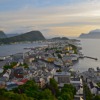 |
#9 | Norway | 1.6% | $74,700 | 9% | 5.3 M |
 |
#10 | Canada | 1.1% | $43,200 | -3.2% | 35.4 M |
 |
#11 | Australia | 2.4% | $56,300 | -4.3% | 23 M |
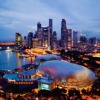 |
#12 | Singapore | 2% | $52,900 | 19.8% | 5.8 M |
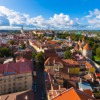 |
#13 | Estonia | 1.1% | $17,300 | 2.1% | 1.3 M |
 |
#14 | Luxembourg | 4.8% | $101,400 | 5.5% | 0.6 M |
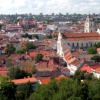 |
#15 | Lithuania | 1.6% | $14,200 | -1.7% | 2.9 M |
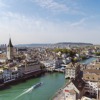 |
#16 | Switzerland | 0.8% | $80,200 | 11.4% | 8.2 M |
 |
#17 | Belgium | 1.4% | $40,200 | – | 11.4 M |
 |
#18 | Taiwan | 0.6% | $22,300 | 14.5% | 23.5 M |
 |
#19 | Portugal | 1.5% | $19,200 | 0.4% | 10.8 M |
 |
#20 | Slovenia | 2.3% | $20,700 | 5.2% | 2 M |
 |
#21 | Germany | 1.5% | $41,200 | 8.5% | 80.7 M |
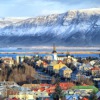 |
#22 | Iceland | 4% | $50,200 | 4.2% | 0.3 M |
 |
#23 | United States | 2.6% | $55,800 | -2.6% | 324 M |
 |
#24 | Austria | 0.9% | $43,400 | 2.6% | 8.7 M |
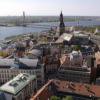 |
#25 | Latvia | 2.7% | $13,700 | -1.2% | 2 M |
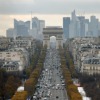 |
#26 | France | 1.3% | $36,200 | -0.2% | 66.8 M |
 |
#27 | Israel | 2.5% | $35,300 | 4.7% | 8.2 M |
 |
#28 | South Korea | 2.6% | $27,200 | 7.7% | 50.9 M |
 |
#29 | Spain | 3.2% | $25,800 | 1.4% | 48.6 M |
 |
#30 | Malta | 6.2% | $23,200 | 10% | 0.4 M |
 |
#31 | Poland | 3.7% | $12,500 | -0.2% | 38.5 M |
 |
#32 | Cyprus | 1.5% | $23,000 | -3.6% | 1.2 M |
 |
#33 | United Arab Emirates | 4% | $40,400 | 3.3% | 5.9 M |
 |
#34 | Czech Republic | 4.5% | $17,200 | 0.9% | 10.6 M |
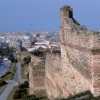 |
#35 | Macedonia | 3.7% | $4,900 | -1.2% | 2.1 M |
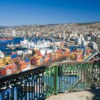 |
#36 | Chile | 2.3% | $13,400 | -2% | 17.7 M |
 |
#37 | Japan | 0.5% | $32,500 | 3.3% | 126.7 M |
 |
#38 | Bulgaria | 3% | $6,800 | 1.4% | 7.1 M |
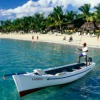 |
#39 | Mauritius | 3.5% | $9,100 | -4.4% | 1.3 M |
 |
#40 | Slovakia | 3.6% | $16,000 | -1.3% | 5.4 M |
 |
#41 | Hungary | 2.9% | $12,300 | 4.4% | 9.9 M |
 |
#42 | Italy | 0.8% | $29,800 | 2.2% | 62 M |
 |
#43 | Georgia | 2.8% | $3,800 | -9.9% | 4.9 M |
 |
#44 | Malaysia | 5% | $9,800 | 3% | 30.9 M |
 |
#45 | Romania | 3.8% | $9,000 | -1.1% | 21.6 M |
 |
#46 | Croatia | 1.6% | $11,500 | 5.2% | 4.3 M |
 |
#47 | Greece | -0.2% | $18,000 | – | 10.8 M |
 |
#48 | South Africa | 1.3% | $5,700 | -4.4% | 54.3 M |
 |
#49 | Costa Rica | 3.7% | $10,600 | -4.1% | 4.9 M |
 |
#50 | Montenegro | 3.2% | $6,400 | -8.4% | 0.6 M |
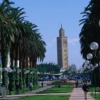 |
#51 | Morocco | 4.5% | $2,900 | -1.9% | 33.7 M |
 |
#52 | Oman | 3.3% | $15,600 | -16% | 3.4 M |
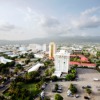 |
#53 | Jamaica | 0.9% | $5,100 | -3.5% | 3 M |
 |
#54 | Qatar | 3.7% | $74,700 | 8.2% | 2.3 M |
 |
#55 | Uruguay | 1% | $15,600 | -3.5% | 3.4 M |
 |
#56 | Colombia | 3.1% | $6,100 | -6.4% | 47.2 M |
 |
#57 | Peru | 3.3% | $6,100 | -4.4% | 30.7 M |
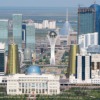 |
#58 | Kazakhstan | 1.2% | $10,500 | -2.4% | 18.4 M |
 |
#59 | Panama | 5.8% | $13,300 | -6.5% | 3.7 M |
 |
#60 | Bahrain | 2.9% | $23,400 | -3% | 1.4 M |
 |
#61 | Albania | 2.8% | $4,000 | -9.7% | 3 M |
 |
#62 | Turkey | 4% | $9,100 | -4.5% | 80.3 M |
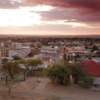 |
#63 | Namibia | 5.3% | $4,700 | -11.5% | 2.4 M |
 |
#64 | Azerbaijan | 1.1% | $5,500 | -0.4% | 9.9 M |
 |
#65 | Mexico | 2.5% | $9,000 | -2.9% | 123.2 M |
 |
#66 | Mongolia | 2.4% | $4,000 | -4.7% | 3 M |
 |
#67 | Thailand | 2.8% | $5,800 | 7.8% | 68.2 M |
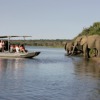 |
#68 | Botswana | -0.3% | $6,400 | 6.6% | 2.2 M |
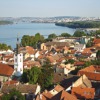 |
#69 | Serbia | 0.7% | $5,100 | -4.8% | 7.1 M |
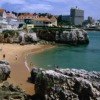 |
#70 | Cape Verde | 1.5% | $3,100 | -3.7% | 0.6 M |
 |
#71 | Jordan | 2.4% | $4,900 | -9% | 8.2 M |
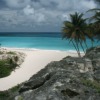 |
#72 | Barbados | 0.9% | $15,700 | -7.2% | 0.3 M |
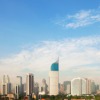 |
#73 | Indonesia | 4.8% | $3,300 | -2% | 258.3 M |
 |
#74 | Ukraine | -9.9% | $2,100 | -0.3% | 44.2 M |
 |
#75 | Armenia | 3% | $3,500 | -2.4% | 3.1 M |
 |
#76 | Trinidad and Tobago | -2.1% | $20,400 | -4.8% | 1.2 M |
 |
#77 | Moldova | -0.5% | $1,800 | -3.8% | 3.5 M |
 |
#78 | Rwanda | 6.9% | $700 | -13.9% | 13 M |
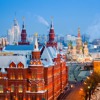 |
#79 | Russia | -3.7% | $9,100 | 5.2% | 142.4 M |
 |
#80 | Saudi Arabia | 3.5% | $20,500 | -8.3% | 28.2 M |
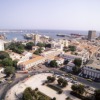 |
#81 | Senegal | 6.5% | $900 | -6.6% | 14.3 M |
 |
#82 | Bosnia and Herzegovina | 3.2% | $4,200 | -4.9% | 3.9 M |
 |
#83 | Sri Lanka | 4.8% | $3,900 | -2.4% | 22.2 M |
 |
#84 | Kuwait | 1.1% | $29,000 | 5.3% | 2.8 M |
 |
#85 | India | 7.6% | $1,600 | -1.1% | 1,266.9 M |
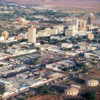 |
#86 | Zambia | 3% | $1,300 | -3.6% | 15.5 M |
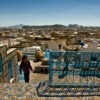 |
#87 | Tunisia | 0.8% | $3,900 | -8.9% | 11.1 M |
 |
#88 | Lesotho | 2.8% | $1,000 | -8.2% | 2 M |
 |
#89 | Philippines | 5.9% | $2,900 | 2.9% | 102.6 M |
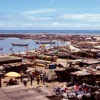 |
#90 | Ghana | 3.9% | $1,400 | -7.5% | 26.9 M |
 |
#91 | Brazil | -3.8% | $8,500 | -3.3% | 205.8 M |
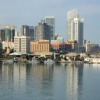 |
#92 | Lebanon | 1% | $8,100 | -22.6% | 6.2 M |
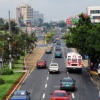 |
#93 | El Salvador | 2.5% | $4,200 | -3.6% | 6.2 M |
 |
#94 | Bhutan | 5.2% | $2,500 | -29.7% | 0.8 M |
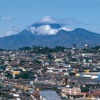 |
#95 | Guatemala | 4.1% | $3,900 | -0.3% | 15.2 M |
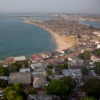 |
#96 | Liberia | 0% | $500 | -35.1% | 4.3 M |
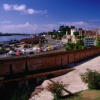 |
#97 | Dominican Republic | 7% | $6,400 | -1.9% | 10.6 M |
 |
#98 | Vietnam | 6.7% | $2,100 | 0.5% | 95.3 M |
 |
#99 | Argentina | 2.5% | $13,400 | -2.9% | 43.9 M |
 |
#100 | Benin | 5% | $800 | -9.3% | 10.7 M |
 |
#101 | Guyana | 3.2% | $4,100 | -5.8% | 0.7 M |
 |
#102 | China | 6.9% | $7,900 | 3% | 1,373.5 M |
 |
#103 | Egypt | 4.2% | $3,600 | -3.7% | 94.7 M |
 |
#104 | Pakistan | 4% | $1,400 | -1% | 202 M |
 |
#105 | Kenya | 5.6% | $1,400 | -6.8% | 46.8 M |
 |
#106 | Cote d’Ivoire | 8.5% | $1,400 | -1.8% | 23.7 M |
 |
#107 | Uganda | 4.8% | $700 | -8.7% | 38.3 M |
 |
#108 | Kyrgyzstan | 3.5% | $1,100 | -9.3% | 5.7 M |
 |
#109 | Mali | 6% | $700 | -5.5% | 17.5 M |
 |
#110 | Sierra Leone | -21.1% | $700 | -14.1% | 6 M |
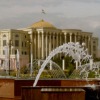 |
#111 | Tajikistan | 6% | $900 | -5.1% | 8.3 M |
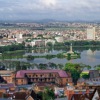 |
#112 | Madagascar | 3.1% | $400 | -1.8% | 24.4 M |
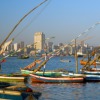 |
#113 | Mozambique | 6.6% | $500 | -36.2% | 25.9 M |
 |
#114 | Honduras | 3.6% | $2,500 | -6.4% | 8.9 M |
 |
#115 | Ecuador | 0.3% | $6,200 | -2.2% | 16.1 M |
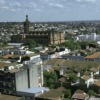 |
#116 | Paraguay | 3.1% | $4,200 | -1.7% | 6.9 M |
 |
#117 | Bangladesh | 6.8% | $1,200 | 0.8% | 156.2 M |
 |
#118 | Nepal | 2.7% | $700 | 5.1% | 29 M |
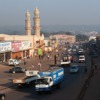 |
#119 | Malawi | 3% | $400 | -12.5% | 18.6 M |
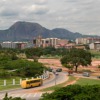 |
#120 | Nigeria | 2.7% | $2,600 | -3.2% | 186.1 M |
 |
#121 | Burundi | -4% | $300 | -14.7% | 11.1 M |
 |
#122 | Tanzania | 7% | $900 | -8.9% | 52.5 M |
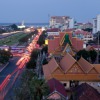 |
#123 | Cambodia | 7% | $1,200 | -11.3% | 16 M |
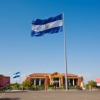 |
#124 | Nicaragua | 4.9% | $2,100 | -8.9% | 6 M |
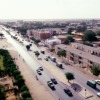 |
#125 | Mauritania | 1.2% | $1,400 | -25.9% | 3.7 M |
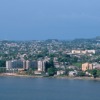 |
#126 | Gabon | 4% | $8,300 | -1.8% | 1.7 M |
 |
#127 | Iran | 0.4% | $5,400 | 1.9% | 82.8 M |
 |
#128 | Cameroon | 5.8% | $1,300 | -4.1% | 24.4 M |
 |
#129 | Bolivia | 4.8% | $3,100 | -5.8% | 11 M |
 |
#130 | Ethiopia | 10.2% | $600 | -12% | 102.4 M |
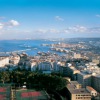 |
#131 | Algeria | 3.9% | $4,200 | -16.5% | 40.3 M |
 |
#132 | Zimbabwe | 1.1% | $900 | -10.7% | 14.5 M |
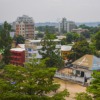 |
#133 | Democratic Republic of the Congo | 6.9% | $400 | -4.1% | 81.3 M |
 |
#134 | Laos | 7.6% | $1,800 | -24.2% | 7 M |
 |
#135 | Venezuela | -6.2% | $12,000 | -5.5% | 30.9 M |
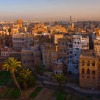 |
#136 | Yemen | -28.1% | $1,300 | -5.7% | 27.4 M |
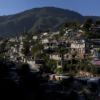 |
#137 | Haiti | 1.2% | $800 | -2.5% | 10.5 M |
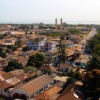 |
#138 | Gambia | 4.4% | $400 | -16% | 2 M |
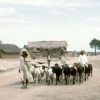 |
#139 | Chad | 1.8% | $800 | -9.7% | 11.9 M |










